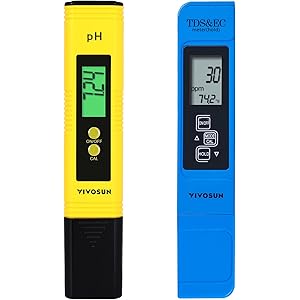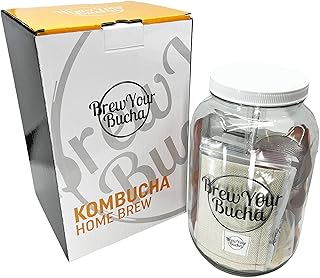Kombucha First Fermentation Time: The Key to Perfecting Your Brew
Kombucha has taken the world by storm, offering a unique blend of flavors and potential health benefits. However, brewing this effervescent tea at home can be a nuanced process, particularly when it comes to understanding the fermentation time. The first fermentation of kombucha is critical, as it lays the foundation for the drink’s flavor, acidity, and overall character. In this comprehensive guide, we’ll explore the intricacies of the first fermentation time in kombucha brewing, the factors that influence it, and how you can achieve the perfect balance for your personal taste.
What is Kombucha?
Kombucha is a fermented beverage made from sweetened tea and a symbiotic culture of bacteria and yeast, known as SCOBY (Symbiotic Culture of Bacteria and Yeast). This process transforms the sugars in the tea into a fizzy, tangy drink that is often lauded for its health benefits.
The fermentation process consists of two main stages:
- Primary Fermentation: This is the initial fermentation phase where the tea develops its primary flavor profile.
- Secondary Fermentation: This stage is optional and is often used to enhance flavors and carbonation.
Understanding the First Fermentation
The first fermentation is where the majority of the flavor and acidity is developed. This phase can take anywhere from 7 to 14 days, depending on various factors such as temperature, sweetness of the tea, and the strength of the SCOBY.
Why is Fermentation Time Important?
The length of the first fermentation significantly affects the taste, texture, and health benefits of the final kombucha.
- Flavor Development: Longer fermentation times typically result in a more acidic and tangy flavor, while shorter times yield a sweeter, milder taste.
- Carbonation Levels: The fermentation time also influences carbonation, as more extended fermentations produce more carbon dioxide.
- Health Benefits: The longer the fermentation, the more probiotics and beneficial acids are developed, potentially enhancing the drink’s health benefits.
Factors Influencing First Fermentation Time
Several factors can affect how long you should ferment your kombucha. Understanding these elements will help you master the fermentation process.
1. Temperature
Temperature is one of the most critical factors in determining fermentation time. Kombucha ferments best between 70°F and 85°F (21°C to 29°C). Here’s how temperature impacts fermentation:
- Warm Temperatures: A warmer environment speeds up fermentation. If the temperature rises above 85°F (29°C), fermentation can occur too quickly, leading to overly sour kombucha.
- Cool Temperatures: If the temperature drops below 70°F (21°C), fermentation slows down, potentially extending the fermentation time beyond the typical range.
2. Sweetness of the Tea
The initial sugar content in the sweetened tea significantly affects fermentation time.
- High Sugar Concentration: If you use a sweeter tea, fermentation may take longer as the yeast has more sugar to consume.
- Low Sugar Concentration: Conversely, using less sugar may result in a quicker fermentation process.
3. Strength of the SCOBY
The health and vitality of your SCOBY play a crucial role in fermentation time.
- Strong SCOBY: A robust and well-maintained SCOBY ferments faster, producing tangy and effervescent kombucha in a shorter period.
- Weak SCOBY: If your SCOBY is thin or weak, it may take longer to ferment, as it may not be as effective in converting sugars into acids and gases.
4. pH Levels
Monitoring the pH levels during fermentation can provide insight into the fermentation process. The ideal pH for kombucha is around 2.5 to 3.5 at the end of the first fermentation.
- High pH Levels: If the pH is too high, the fermentation may be too slow, and you could be at risk of contamination.
- Low pH Levels: A pH level that drops too quickly may indicate an overly sour brew.
5. Type of Tea Used
The type of tea you choose can also influence fermentation time. Black tea, green tea, and herbal teas each have different chemical compositions that affect how quickly the yeast and bacteria can work.
- Black Tea: This is the most commonly used tea for kombucha and usually ferments relatively quickly.
- Green Tea: Green tea can ferment at a moderate pace but may yield a more delicate flavor.
- Herbal Tea: Herbal teas can vary widely in fermentation time, and not all are suitable for kombucha brewing.
The Ideal First Fermentation Time
While the ideal fermentation time can vary based on the factors mentioned above, a general guideline is as follows:
- Short Fermentation (3-5 Days): This results in a sweeter, less tangy kombucha. Suitable for those who prefer milder flavors.
- Medium Fermentation (7-10 Days): This is often the sweet spot for achieving a balanced flavor with both sweetness and tang.
- Long Fermentation (10-14 Days): This results in a sourer, more vinegary flavor. Ideal for those who enjoy a robust, tart taste.
Tasting Throughout the Process
One of the best ways to determine the right fermentation time for your kombucha is to taste it regularly. Start tasting your kombucha after about five days, and continue tasting every day until you achieve your desired flavor profile. This approach allows you to customize your brew to your liking.
Signs of Proper Fermentation
As your kombucha ferments, there are several indicators to watch for that suggest fermentation is proceeding correctly:
- Formation of a New SCOBY Layer: A new layer of SCOBY may form on the surface, which is a good sign that fermentation is happening.
- Bubbles: You should notice bubbles forming in the liquid, indicating carbonation.
- Aromas: The smell should be tangy and slightly sweet, rather than off-putting or foul.
- Taste: A balance of sweet and sour flavors should develop over time.
Troubleshooting Common Fermentation Issues
Fermentation isn’t always straightforward. Here are some common issues and how to address them:
1. Too Sour
If your kombucha tastes overly sour, it may have fermented for too long.
Solution: Adjust your fermentation time for future batches. Aim for shorter fermentations if you prefer a sweeter flavor.
2. Flat Kombucha
If your kombucha lacks carbonation, it may not have fermented long enough or wasn’t bottled tightly during secondary fermentation.
Solution: Ensure your bottles are sealed tightly and consider adding a small amount of sugar or fruit before bottling to promote carbonation.
3. Mold
Mold can appear if your brewing environment is not sterile or if your SCOBY is unhealthy.
Solution: If you see mold, discard the entire batch and start fresh with a new SCOBY. Always ensure your equipment is sanitized.
4. Weak SCOBY
A weak or thin SCOBY may result in a slow fermentation process.
Solution: Consider growing a new SCOBY from a piece of your existing one or obtain a new SCOBY from a reputable source.
The Health Benefits of Properly Fermented Kombucha
Brewing kombucha at home not only allows you to customize flavors but also offers numerous health benefits, thanks to the fermentation process. Here are some potential benefits of consuming well-fermented kombucha:
1. Rich in Probiotics
Kombucha contains live probiotics, which are beneficial bacteria that can support gut health. These probiotics may help improve digestion and may enhance immune function.
2. Antioxidant Properties
The tea used to brew kombucha is rich in antioxidants, which help combat oxidative stress and reduce inflammation in the body.
3. Detoxification
Kombucha is believed to support liver function and help detoxify the body, thanks to the presence of glucuronic acid, a compound produced during fermentation.
4. Energy Boost
The B vitamins and organic acids in kombucha can provide a natural energy boost, making it a popular drink for those seeking a pick-me-up.
5. Potential Weight Management
Kombucha is a low-calorie beverage that can serve as a healthier alternative to sugary sodas and juices, potentially aiding in weight management.
The first fermentation time in kombucha brewing is a crucial factor that can significantly impact the flavor, acidity, and overall enjoyment of the drink. By understanding the various factors influencing fermentation time and regularly tasting your brew, you can create a customized kombucha that perfectly suits your preferences.
As you embark on your kombucha brewing journey, remember that experimentation is key. Don’t hesitate to adjust fermentation times, play with different teas, and explore various flavoring options to find the perfect brew for you. Happy brewing!
VIVOSUN Digital pH and TDS Meter Kits, 0.01pH High Accuracy Pen Type pH Meter ± 2% Readout Accuracy 3-in-1 TDS EC Temperature Meter for Hydroponics, Pool and Aquarium, Yellow Blue, UL Certified
$15.99 (as of 02/10/2025 15:41 GMT -03:00 - More infoProduct prices and availability are accurate as of the date/time indicated and are subject to change. Any price and availability information displayed on [relevant Amazon Site(s), as applicable] at the time of purchase will apply to the purchase of this product.)
Receive tips, news and exclusive offers! Sign up for our newsletter now!












